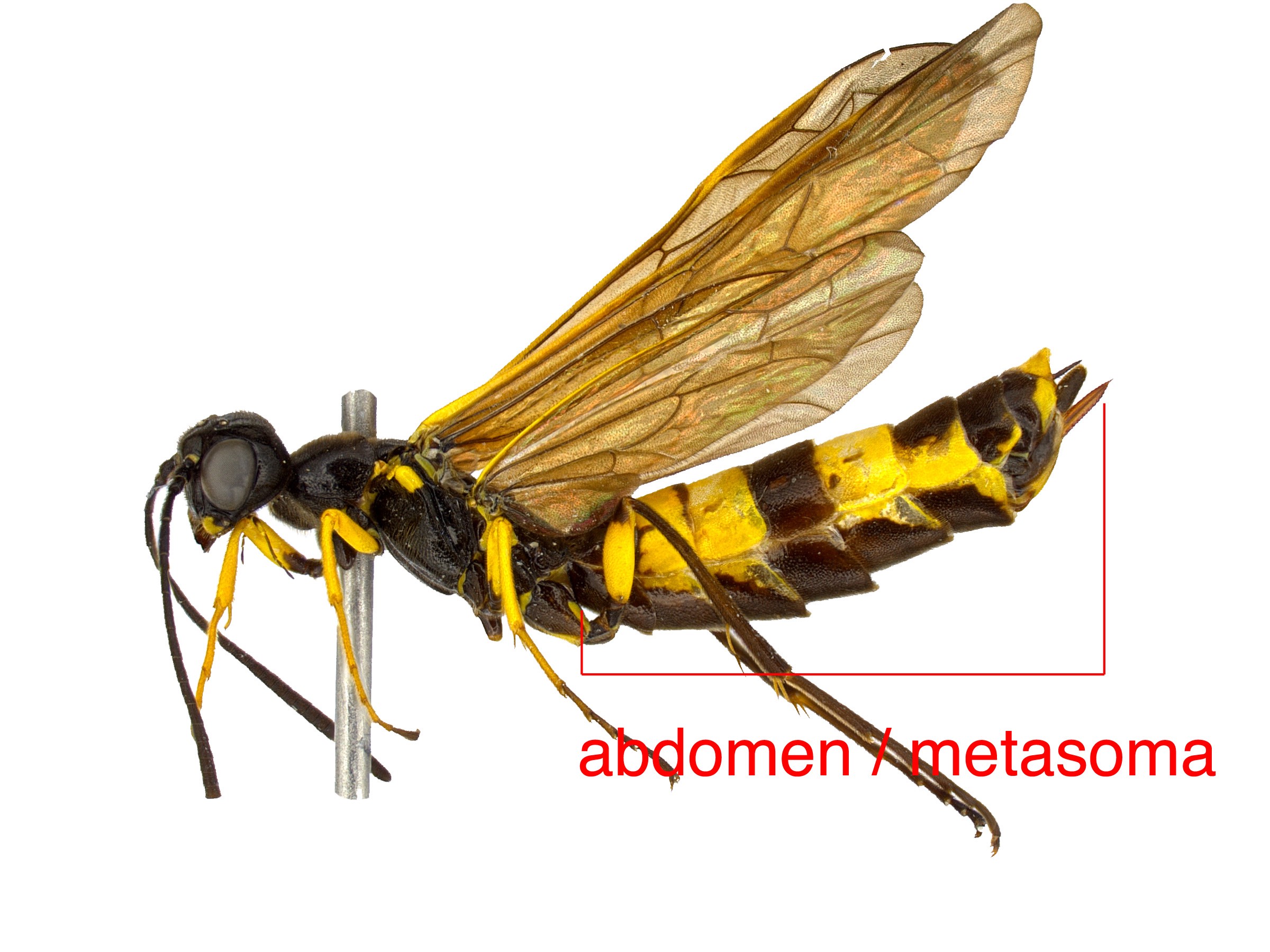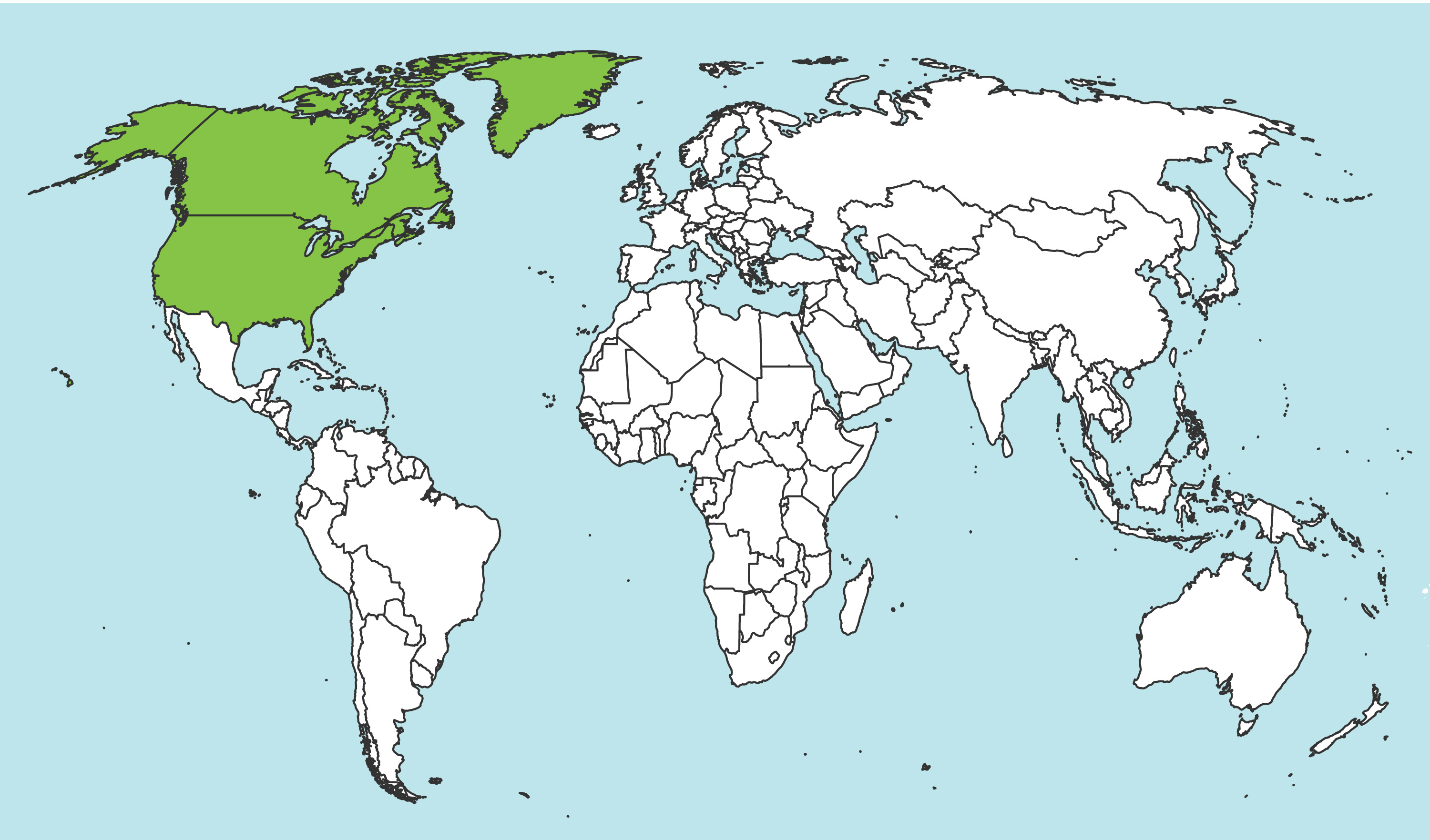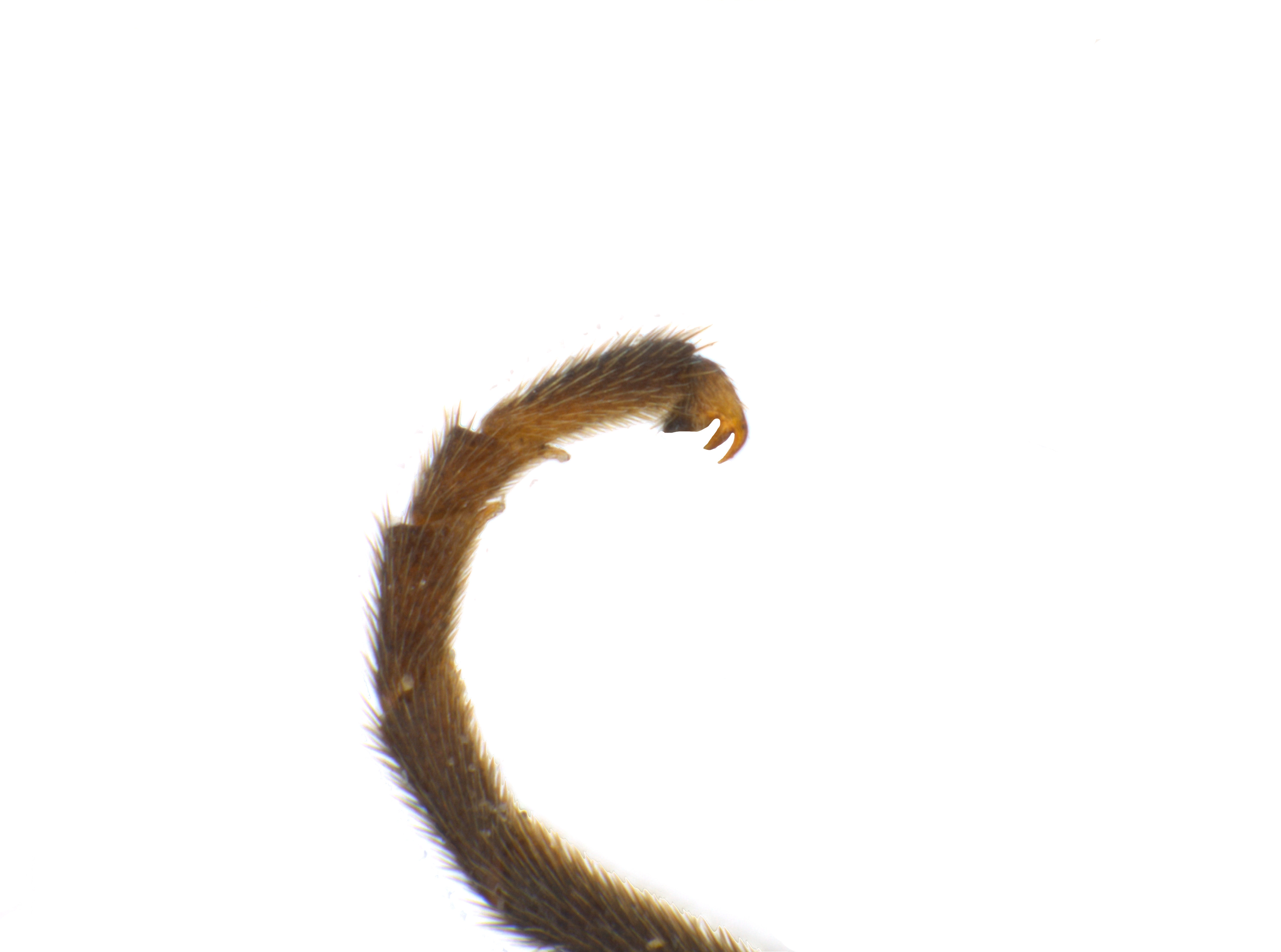Family: Tenthredinidae
Family common name: common sawflies
Subfamily: Allantinae
Tribe: Empriini
Genus: Empria Lepeletier & Serville, 1828
Subgenera: none
The Tenthredinidae are the most species-rich family and are found throughout the world, in all continents but Antarctica. They are known as the “common sawflies.” They can generally be recognized by a cylindrical body and long, segmented antennaeantenna:
the sensory organ emerging from the front of the head, usually between the compound eyes and above the clypeus; includes the flagellum, scape and pedicel
 . Otherwise, they come in a variety of colors, sizes, and forms (Goulet 1992Goulet 1992:
. Otherwise, they come in a variety of colors, sizes, and forms (Goulet 1992Goulet 1992:
Goulet H. 1992. The genera and subgenera of the sawflies of Canada and Alaska: Hymenoptera. Symphyta. The insects and arachnids of Canada. Part 20. Agriculture Canada Publication.).
Sawflies in the Allantinae subfamily are mostly black and shining, sometimes with other colors. They have agricultural importance as some species are pests on cultivated and ornamental plants (Smith 1979aSmith 1979a:
Smith DR. 1979a. Nearctic sawflies. IV. Allantinae: Adults and larvae (Hymenoptera: Tenthredinidae). Technical Bulletin, U.S. Department of Agriculture 1595: 1-172.). They can be distinguished from other subfamilies by wing venationvenation:
the network of veins on a wing
(Smith 2003aSmith 2003a:
Smith DR. 2003a. A Synopsis of the sawflies (Hymenoptera: Symphyta) of America south of the United States: Tenthredinidae (Allantinae). Journal of Hymenoptera Research 12 (1): 148-192.).
Empria are medium-sized, about 6–8 mm in length. All North American species are mostly black with pairs of light-colored spots on the dorsum of the abdomenabdomen:
the third and last segment of an insect's body; in sawflies this is usually made up of 11 segments (segments 9 and 10 often fused) (Smith 1979aSmith 1979a:
(Smith 1979aSmith 1979a:
Smith DR. 1979a. Nearctic sawflies. IV. Allantinae: Adults and larvae (Hymenoptera: Tenthredinidae). Technical Bulletin, U.S. Department of Agriculture 1595: 1-172.). They are commonly misidentified because there are few diagnostic characters to distinguish them from other Allantinae (Prous et al. 2011Prous et al. 2011:
Prous M, Heidemaa M, Shinohara A, and Soon V. 2011. Review of the sawfly genus Empria (Hymenoptera, Tenthredinidae) in Japan. ZooKeys 150: 347-380. https://doi.org/10.3897/zookeys.150.1968).
There are 51 described extantextant:
in existence; opposite of extinct
species worldwide. Twelve occur in North America (Smith 2003aSmith 2003a:
Smith DR. 2003a. A Synopsis of the sawflies (Hymenoptera: Symphyta) of America south of the United States: Tenthredinidae (Allantinae). Journal of Hymenoptera Research 12 (1): 148-192., Taeger et al. 2010Taeger et al. 2010:
Taeger A, Blank SM, and Liston AD. 2010. World Catalog of Symphyta (Hymenoptera). Zootaxa 2580: 1-1064.).
A NearcticNearctic:
describing the region of the Northern Hemisphere that includes North America south through northern Mexico
 key to species is included in Smith 1979aSmith 1979a:
key to species is included in Smith 1979aSmith 1979a:
Smith DR. 1979a. Nearctic sawflies. IV. Allantinae: Adults and larvae (Hymenoptera: Tenthredinidae). Technical Bulletin, U.S. Department of Agriculture 1595: 1-172..
Subfamily characters
 vein M and 1m-cu parallel (Smith 1979aSmith 1979a:
vein M and 1m-cu parallel (Smith 1979aSmith 1979a: vein 2A+3A complete, connected to 1A by crossveincrossvein:
vein 2A+3A complete, connected to 1A by crossveincrossvein:Genus characters
 (Smith 1979aSmith 1979a:
(Smith 1979aSmith 1979a: shallowly notched (Smith 1979aSmith 1979a:
shallowly notched (Smith 1979aSmith 1979a: vein 2r present (Smith 1979aSmith 1979a:
vein 2r present (Smith 1979aSmith 1979a: vein M intersecting Sc+R at the intersection of Sc+R and Rs+M (Smith 1979aSmith 1979a:
vein M intersecting Sc+R at the intersection of Sc+R and Rs+M (Smith 1979aSmith 1979a: without basalbasal:
without basalbasal:Empria can be confused with similar species in the subfamily Allantinae or tribe Empriini. It can be distinguished by paired white spots on the abdomenabdomen:
the third and last segment of an insect's body; in sawflies this is usually made up of 11 segments (segments 9 and 10 often fused) , angled crossveincrossvein:
, angled crossveincrossvein:
short section of wing vein that connects two larger veins
, and the lack of a tarsal clawtarsal claw:
sharpened appendage emerging from the apex of the tarsus
 basalbasal:
basalbasal:
towards the base; closest to the body
lobe (Smith 2003aSmith 2003a:
Smith DR. 2003a. A Synopsis of the sawflies (Hymenoptera: Symphyta) of America south of the United States: Tenthredinidae (Allantinae). Journal of Hymenoptera Research 12 (1): 148-192.).
none
In North America, Empria feeds on Rosa (rose), Fragaria (strawberry), Potentilla (cinquefoil), Rubus (blackberry), Betula (birch), Corylus (hazel), Alnus (alder), and Salix (willow) (Smith 2003aSmith 2003a:
Smith DR. 2003a. A Synopsis of the sawflies (Hymenoptera: Symphyta) of America south of the United States: Tenthredinidae (Allantinae). Journal of Hymenoptera Research 12 (1): 148-192.).
The female Empria lays eggs into the leaf tissue along a veinvein:
a tube-like, often darkened, structure on the wings
 , sometimes in the leaf petiolepetiole:
, sometimes in the leaf petiolepetiole:
stalk or stem; used to describe basal vein stalk in wing OR basal stalk of a leaf.
. LarvaeLarva:
the immature stage of holometabolous insects
 are light gray green, sometimes with longitudinal stripes, slightly flattened like a slug, dull, and finely textured. The young larvaelarva:
are light gray green, sometimes with longitudinal stripes, slightly flattened like a slug, dull, and finely textured. The young larvaelarva:
the immature stage of holometabolous insects
 feed singly on the underside of the leaf. At maturity they drop to the ground and build cells with dirt and sand, where they overwinter. Adults emerge in the spring. Described species of Empria are univoltineunivoltine:
feed singly on the underside of the leaf. At maturity they drop to the ground and build cells with dirt and sand, where they overwinter. Adults emerge in the spring. Described species of Empria are univoltineunivoltine:
describing an insect with a life cycle of one generation per year
(Smith 1979aSmith 1979a:
Smith DR. 1979a. Nearctic sawflies. IV. Allantinae: Adults and larvae (Hymenoptera: Tenthredinidae). Technical Bulletin, U.S. Department of Agriculture 1595: 1-172.).
Empria obscurata and E. maculata are commonly referred to as the early strawberry slug and late strawberry slug, respectively. They feed on the foliage of cultivated strawberry plants and can be a minor pest (Smith 1979aSmith 1979a:
Smith DR. 1979a. Nearctic sawflies. IV. Allantinae: Adults and larvae (Hymenoptera: Tenthredinidae). Technical Bulletin, U.S. Department of Agriculture 1595: 1-172.).
World: This genus is known from North America, Europe east through Russia, and in China, Korea, and Japan (Smith 1979aSmith 1979a:
Smith DR. 1979a. Nearctic sawflies. IV. Allantinae: Adults and larvae (Hymenoptera: Tenthredinidae). Technical Bulletin, U.S. Department of Agriculture 1595: 1-172., Prous et al. 2011Prous et al. 2011:
Prous M, Heidemaa M, Shinohara A, and Soon V. 2011. Review of the sawfly genus Empria (Hymenoptera, Tenthredinidae) in Japan. ZooKeys 150: 347-380. https://doi.org/10.3897/zookeys.150.1968).
North America: Empria is widespread and recorded throughout North America, as far north as Alaska and the Yukon Territory, and as far south as Veracruz, Mexico (Smith 1979aSmith 1979a:
Smith DR. 1979a. Nearctic sawflies. IV. Allantinae: Adults and larvae (Hymenoptera: Tenthredinidae). Technical Bulletin, U.S. Department of Agriculture 1595: 1-172., Smith 2003aSmith 2003a:
Smith DR. 2003a. A Synopsis of the sawflies (Hymenoptera: Symphyta) of America south of the United States: Tenthredinidae (Allantinae). Journal of Hymenoptera Research 12 (1): 148-192.).
Map data from: GBIF.org (29 October 2019) GBIF Occurrence Download Empria
Details about data used for maps can be found here.